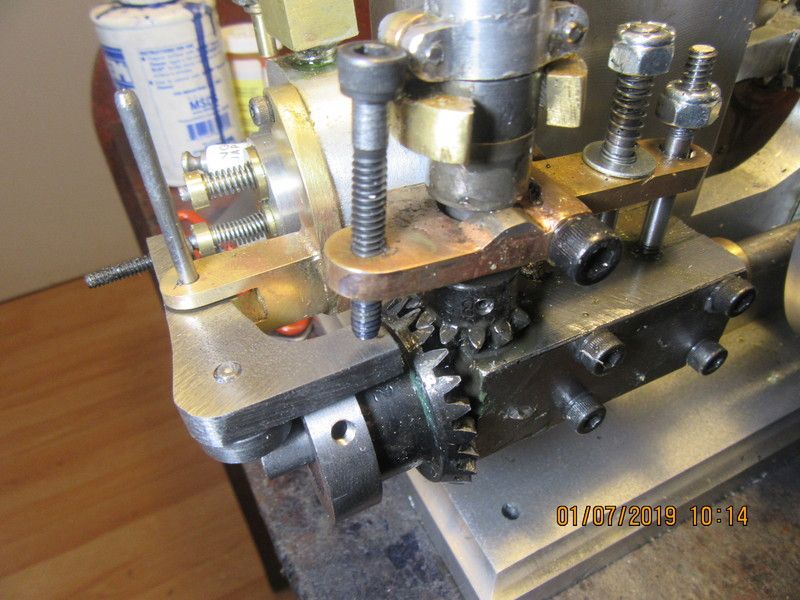And now we're in "troubleshoot" mode. Engine is finished except for gas tank. I have a temporary fuel tank rigged, and two fire extinguishers right beside me. Engine turns over freely, but doesn't have a lot of compression. That's okay, non of my engines had much compression until they fired half a dozen times, which "seats" the valves better than any lapping can. If choked by finger over the carburetor inlet while turning it with the drill, I can see fuel rushing up thru the transparent gas line. I'm getting fuel up to the carburetor okay. If sparkplug is unscrewed and lain on the cylinder head, I've got lots of spark and visually it is coming at the correct time in the sequence of piston movement. Valve timing is spot on, with exhaust valve popping open just as the piston begins to move up on exhaust stroke, and closing just as piston reaches the top dead center. There is very little lead or lag on the valve timing in this engine. It opens and closes within 180 degrees of crankshaft movement. Governor is not hooked up right now. I have to get the engine running first, then I start to play with the governor. I squirted dawn dish-soap around cylinder head to cylinder connection and ran the engine with my electric drill. No bubbling anywhere, so head gasket is not leaking. I have very, very little fuel, and I think I just toasted my electric drill (it's been going funny for a while now). Next step is to run up to my hardware store and buy a new drill and a can of Coleman fuel.









![DreamPlan Home Design and Landscaping Software Free for Windows [PC Download]](https://m.media-amazon.com/images/I/51kvZH2dVLL._SL500_.jpg)





